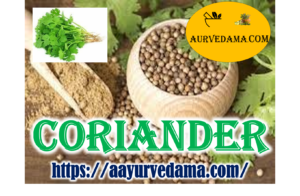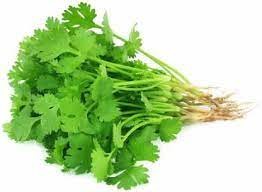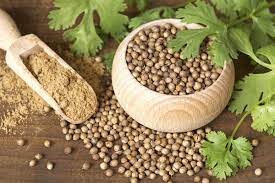Coriander
Coriander (English name Coriander, Hindi name: Dhania), Classical name: Coriandrum sativum. It is eaten raw or lightly cooked to enhance the flavor of food. For example, chopped raw it is added to misal or poha. It is added to the boiling oil while frying. Rarely it is also cooked as a vegetable. It has to be steamed while making coriander vada.

It is called sambar in Vidarbha. (Sambaro is called sambaro when eaten in Gujarat, with chopped onion, grated carrot or green papaya in leaves. Amti in South India is called sambar.)
Must read – Behda ( Sturd Myroblan )
This familiar medicinal plant is cultivated all over India. It is originally from Southern Europe and Asia Minor and has been cultivated in Europe since ancient times. There and in some parts of America it escapes cultivation and grows as a weed elsewhere. It has long been known in the Middle East and Greece. Earlier it was exported from India. The leaves of this plant are called coriander and the fruits are called coriander. This perennial plant is 40–50 cm tall. There are two types of leaves and the trunk is hollow. Upper leaves lanceolate, imperfectly pinnate (feather-like), segmented; The lower leaves are long-stalked, oddly lobed, imperfectly lanceolate, multilobed and their bases are sheathing (surrounding the stem). Flowers appear in November-December and are small, white or slightly bluish, in compound panicles.

Flower structure and other general characteristics as in Umbelliferae clan. Fruits (coriander) are ovate, generally spherical, two lobes and semi-spherical and have vertical ridges. The trunk, leaves and fruits have a pungent smell. The use of this plant in cooking and seasoning is well known. Earlier it was used as an antipyretic and aromatic in medicine. It has gained importance in cooking as it contains a volatile (volatile) oil. Coriander is also used in sweets and liquors for the same. Fruits are stimulant, diuretic, carminative, nutritive, deepak (appetite stimulant), choleretic, vajikar (aphrodisiac), cooling, colic (abdominal pain) and bloody piles.
Read also – Bael tree ( Bela )
Coriander benefits
There are many benefits of using coriander. It mixed with fresh buttermilk can prevent indigestion, nausea, diarrhea and colitis.

It is beneficial in case of typhoid. Boil dry coriander in water and filter the water and cool it. Cholesterol level can be reduced by drinking that water.
A spoonful of coriander juice mixed with a little turmeric and applied on pimples cures them. Eating chutney with it , green chillies, grated coconut and ginger gives relief from stomach ache caused by indigestion.
Like to read – Bibba ( Marking Nut Tree )
Source – Wikipediya
Read more –